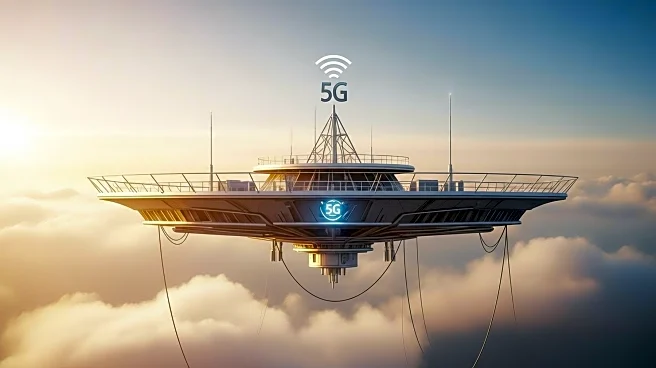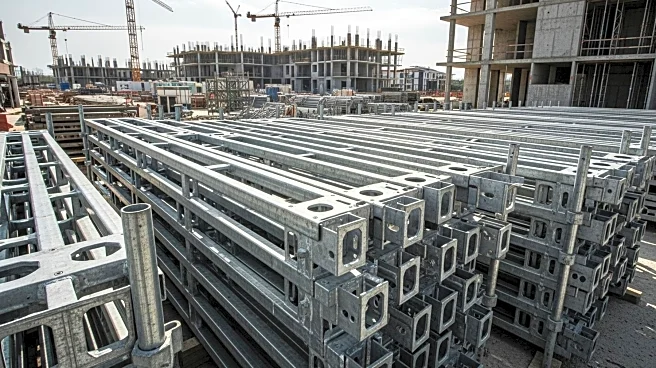What is the story about?
What's Happening?
SoftBank Corp has successfully tested a new innovation in High Altitude Platform Station (HAPS) technology, which beams stable 5G connectivity from the sky to the ground. The trial involved a six-cell payload mounted on a light aircraft, flying at an altitude of 3,000 meters over Hachijō Island, Tokyo. The test demonstrated end-to-end 5G communication between a base station and mobile devices, achieving an average downlink speed of 33Mb/s. The payload integrates equipment for service and feeder links, connecting the HAPS platform with devices and ground gateways. This development marks a step towards equipping HAPS platforms with multicell payloads capable of covering 200km of land.
Why It's Important?
The advancement of HAPS technology by SoftBank is crucial in addressing the global issue of internet connectivity, particularly in rural areas. With approximately 3.4 billion people unconnected to the internet, this technology offers a promising solution to expand coverage and improve access. By providing stable 5G connectivity from high altitudes, HAPS can enhance communication infrastructure and serve as a backup during network disruptions. The successful test underscores the potential for HAPS to play a significant role in bridging the digital divide and supporting disaster response efforts.
What's Next?
SoftBank aims to upgrade the new payload with higher capacity and roll it out in future HAPS commercial services. The company plans to launch pre-commercial HAPS services in Japan by 2026, utilizing lighter-than-air craft developed in partnership with US-based Sceye. These services will initially serve as a backup for traditional networks during large-scale disasters and provide connectivity to areas unreachable by terrestrial networks. SoftBank's continued investment in HAPS technology indicates a commitment to expanding its capabilities and addressing global connectivity challenges.
AI Generated Content
Do you find this article useful?














